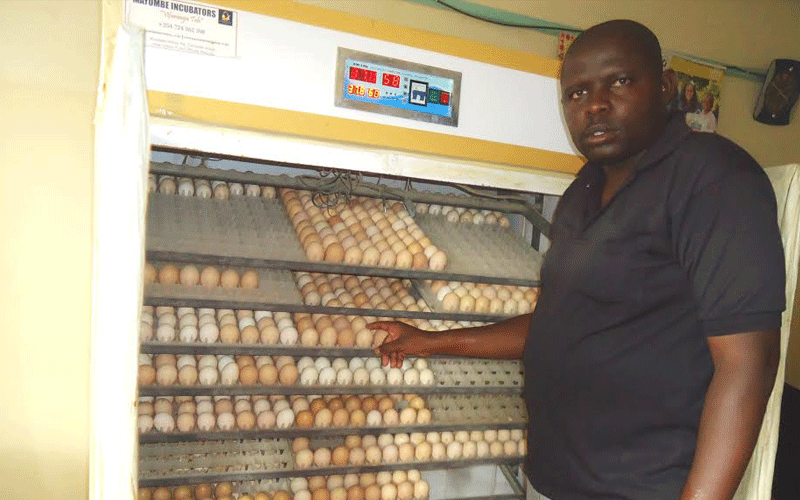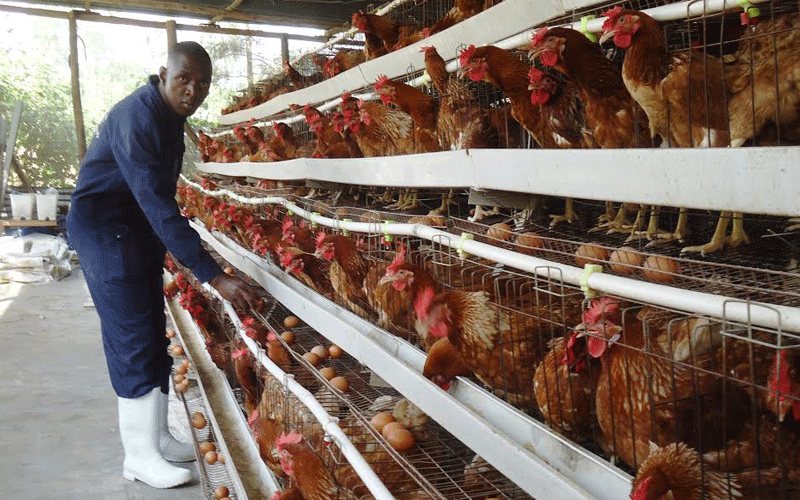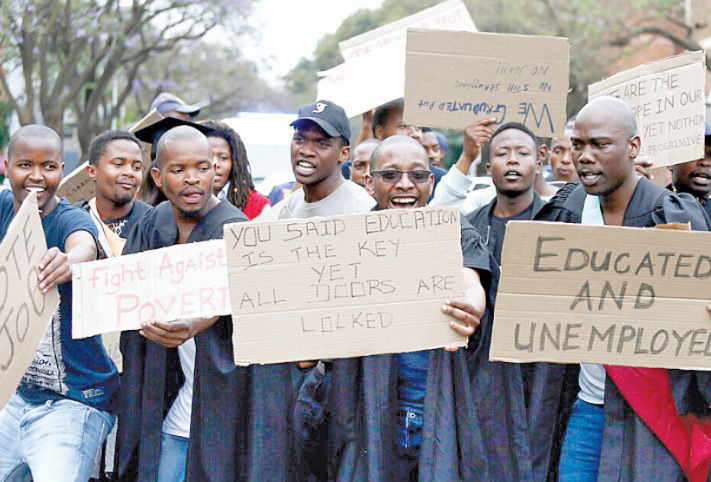Kisumu poultry farmers upbeat as business rebounds

Earlier in the year, poulterers in Kisumu were a frustrated lot. They watched as their investments went down the drain, however, there is a ray of hope as business returns to normalcy.
Poultry farmers in Kisumu county are beginning to register increased business fortunes after experiencing losses occasioned by the coronavirus pandemic.
The farmers were hard hit by the Covid-19 ravaging effects, a situation that saw majority scale-down production of certain components.
Steve Kamwamu, a poultry farmer in Kisumu West sub-county is one such farmer.
On average, up until last month since coronavirus broke out, his sales had gone down to 50 trays a day from 80 trays previously.
As a result, he incurred high production costs and less returns for the eggs to finally reach the market.
He also stopped stocking kienyeji birds, which he keeps and sells for meat.
The farmers are, however, hoping for a steady rebound as they have started realisising increased sales attributed to easing of travel restrictions imposed to contain the spread of the virus.
“Our business is slowly picking up and we are eyeing double profits in the coming months.
Before, availability of feeds was difficult at the beginning because of interrupted transport,” he says.
“I am happy that my business sailed through amid the virus crisis. Eggs are considered a budget meal, thus we have managed to sell a good number even when the effects of the pandemic were massively felt on the economy,” he adds.

Photo/PD/NOVEN OWITI
His farm, which has a population of about 3, 000 layers is gradually creeping back to normal and he is able to sell averagely 85 trays of eggs everyday.
He recommends that the government puts in place policies that will encourage more production, especially in times of crisis when there are fewer imports of certain agricultural products leading to acute shortages locally.
Reduced imports
Newton Frodwa, the proprietor of Mayombe hatcheries farm, says despite the upshots of Covid-19, local poultry hatchery significantly improved because of reduced imports from neighboring counties, such as Uganda.
He says the drop in imports due to the border travel restrictions came as good news for local poultry farmers as the prices of chicks improved.
“We have faced less competition for poultry products from import markets during the Covid-19 period, making it a perfect opportunity for us to do good business,” says Frodwa.
He points out that the virus outbreak affected supply chains, especially of fertilised eggs.
As a result, despite the available market for chicks, production of chicks became a challenge for many farmers.
The farmers have, however, learnt their lessons from the pandemic effects and are rooting for new strategies that would enable local farmers navigate through unpredictable misfortunes in future.
“The biggest lesson I have learnt from this pandemic is that food products are essential and even in times of crisis, their demand is rarely affected, but farmers need to diversify their products,” says Kamwamu.
He adds, “I also learnt not to rely entirely on institutions as customers. Individual buyers will always be there irrespective of harsh conditions.”
Frodwa urges local farmers to practice diversification to be able to survive unprecedented crisis that might negatively impact on farming in future.
Diversify supply chains
“The key lesson for me is that farmers should diversify their supply chains and products to be able to absorb future shocks caused by unexpected situations such as Covid-19,” he states.
The gradually growing production of chicks could come as a boost to the county’s poultry industry as supply of such products by farmers has been dwindling over the years.
Poultry statistics from the county agriculture department indicates that the county was able to produce only 1,000 tonnes of poultry meat last year, which is not sufficient to feed its growing populace.
The figures show the farmers kept averagely 500, 000 broilers and 100, 000 layers while the indigenous birds were found to be 2.3 million.
The county is able to generate 30 per cent in poultry products out of its total requirement against the high demand occasioned by rise in middle class population.
The two farmers encourage young people in the county who would like to venture into poultry farming, but have no idea how to start, should not worry as rearing chicken is not difficult to start and one does not need to start with many birds at once.
“Most youths have left their rural homes in search of employment in cities in vain. They should try chicken farming, it has no regrets,” says Frodwa.












